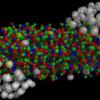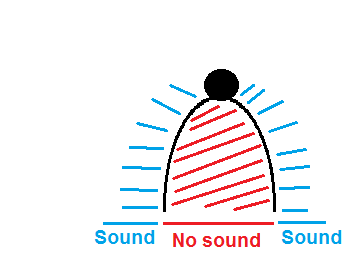-
Posts
926 -
Joined
-
Last visited
Content Type
Profiles
Forums
Events
Everything posted by Function
-
My apologies for bringing up an old post again, but I saw a wonderful video of prof. dr. Walter Lewin from MIT explaining scaling things; physics 8.01, 1st lecture. Referring to an old post (#166) and I was wondering if it's "forumlegal" to post 2 same threads in 2 different categories, to provoke multiple sorts of reactions?
-
Wiles... Why couldn't you find an easier proof..
- Show previous comments 1 more
-

I think he's referring to Wiles' rationale for writing the complicated proof of Fermat's Last Theorem. On that note I'd suppose that the proof itself is an explanation of his thought process
 . But then again.. the question was probably rhetorical haha.
. But then again.. the question was probably rhetorical haha. -

-

I indeed meant Wiles's way too long proof about FLT. Retorical indeed

Had to find a subject for research competence for maths, wanted to do it about FLT, but my teacher didn't feel like letting me look into a +100 pages proof.. Wasn't my meaning, though.. But whatever.. Now it concerns Fermats little theorem

-
So Tibet monks should better be on the inside of the bell when they're ringing it, medically seen? By the way, amazing what difference there is inside, compared to outside the bowl!
-
Hello everyone I have a question I have stumbled upon.. well... playing with stuff. In my bathroom, I have some sort of cup with a chalice-like-shaped 'cover' (see attachment) The black boll is a solid metal ball at which I hold this 'cover'. The rest is, of course, hollow. Now, I've experienced something rather strange; when I tap my finger on the hollow, metal part, keeping hold of the solid ball, it produces a sound - rather logic. The strange part is, that the sound is extremely loud (well, it IS extremely loud when held less dan 2 cm from my ear) at the outer sides (outside of this 'chaliceshape') and there is absolutely no sound in this chalice shape. (So if I put my ear almost in this chalice-shaped cover, I hear nothing, whereas when I hold the outer side close to my ear, the sound is very loud. Same phenomenon occurs when it's being tapped on from the inside. How does this come? Thanks. Function
-
Of course. How could I've forgotten that Thanks! I'll be using the last one, then Seems better to me
-
If I see such exercises, I always use what seems the most general formula for a projectile's trajectory to me: [math]y=y_0+x\cdot\tan{\theta}-\frac{g\cdot x^2}{2v^2\cos^2{\theta}}[/math] Where [math]y[/math] is the height of landing, [math]y_0[/math] is the initial height, [math]\theta[/math] is the angle at which the projectile is thrown, [math]x[/math] the horizontal displacement of the projectile, [math]g[/math] the earth's gravity constant [math](\approx 9.8 ms^{-2}[/math] and [math]v[/math] the initial velocity of the projectile. So what I would do: use what studiot told you and then use this most wonderful formula.
-
What do you mean by this? Do you mean that in reference to a perpendicular line on the ground, let's say x = 0, the force makes an angle of 55° to the left of that line?
-
I'm second in line, I guess Don't bother my question too much, for it's pure imaginary. Imagine a ring, donut of indestructable material is being placed around the earth (like a ball and a concentric circle around it with a greater radius). Wat will the ring do? (Spin together with the earth, don't move in reference to the earth, ...)
-
Hello I just disovered some new functions: sinIntegral(x) (Si(x)) and cosIntegral(x) (Ci(x)) and just played around with them on GeoGebra. Now, I found something kind of 'beautiful': the average area between those functions, limited by [math]a-1[/math] and [math]a[/math] (so just basically any 'area-block' with width 1), equals [math]\frac{\pi}{2}[/math] when the number of elements of which the average is taken reaches [math]\infty[/math]: [math]\lim_{n\to\infty}{\left[\frac{\int_{1}^{n}{Si(x) dx}-\int_{1}^{n}{Ci(x) dx}}{n-1}\right]}=\frac{\pi}{2}[/math]. In order to prove it, I worked out the left side, but I don't really know how to do it further: [math]\lim_{n\to\infty}{\left[\frac{n\cdot Si(n)+\cos{n}-Si(1)-\cos{1}-n\cdot Ci(n)+\sin{n}+Ci(1)-\sin{1}}{n-1}\right]}[/math] According to L'Hôpital: [math]=\lim_{n\to\infty}{\left(n\cdot\frac{\sin{n}}{n}+Si(n)+\sin{n}-n\cdot\frac{\cos{n}}{n}-Ci(n)-\cos{n}\right)}[/math] [math]=\lim_{n\to\infty}{\left(Si(n)-Ci(n)+2\sin{n}-2\cos{n}\right)}[/math] [math]=\lim_{n\to\infty}{\left(Si(n)-Ci(n)\right)}+2\lim_{n\to\infty}{\left(\sin{n}-\cos{n}\right)}[/math] [math]=\frac{\pi}{2}+2\lim_{n\to\infty}{\left(\sin{n}-\cos{n}\right)}[/math] Now, I know that the first term is [math]\frac{\pi}{2}[/math], so the second term should be [math]0[/math], but how can one prove this? As far as I know, [math]\lim_{n\to\infty}{\left(\sin{n}-\cos{n}\right)}[/math] is not specified, for the values of [math]\cos{n}[/math] and [math]\sin{n}[/math] alternate. Can someone help me? Thanks Function
-
Hello everyone For maths, we need to do a research of a mathematical subject. We chose the theorems of Fermat (both the big and small theorem). We are to make a question about this subject, a question worth investigating. (One big question and perhaps some smaller questions about that primary question) However, we can't seem to find one. Can someone help us? Thanks. Function
-
Hello For a research we have to do in class, I'd like to use mathematically correct notations. There is, however, one expression from which I don't know how it's written: a false equation. e.g. Fermat's big theorem: [math]\nexists (x,y,z,n) \in \mathbb{N}_0 : x^n+y^n=z^n[/math] [math]\forall(x,y,z,n)\in\mathbb{N}_0 : \left\{x^n+y^n=z^n\right\}=\emptyset[/math] [math]\forall(x,y,z,n)\in\mathbb{N}_0 : \left\{x^n+y^n=z^n\right\}=0[/math] Or just a very simple example: [math]\left\{1=0\right\}=0[/math] [math]\left\{1=0\right\}=\emptyset[/math] Is any of these notations correct? If not, which one could I use? Thanks. Function
-
Ah crap.. Thanks. I'll make sure to get another one.
-
It then just boots normally.
-
I'm a glutton for the most general formulas Thanks for the link.
-
Hello I have a Dell Inspiron Mini 10, and since 2 days ago, the battery is acting very strange, and extremely annoying. 1. When the notebook is plugged in, it won't start. It will start when the cable isn't plugged in, and will continue its boot when I then plug in the cable. 2. With the cable plugged in and the notebook booted, there's a pretty annoying phenomenon: For about 16 seconds, the battery indicator indicates that the battery is charging (3% available (plugged in, charging)) After those 16 seconds, it suddenly jumps to 0% remaining (so not plugged in and not charging, according the the symbol) for about 7 seconds; this is accompanied by a verry annoying high-frequence sound. (The screen brightness is also much less then) After the 7 seconds of non-charging, it jumps back to the 16 seconds of charging (which just stays on 3% available), making the annoying sound stop And it continues to do this.. Yesterday, I managed to stop this annoying phenomenon, but don't ask me how... Can't remember. So yesterday, in the evening, I shut down my notebook, which was to download updates, and now I experience the problem again. Is my battery f*cked? How could I resolve this problem? Thanks! Function UPDATE: just saw that the battery indicator now just holds on "3% available (plugged in, charging)", not doing the 'filling battery animation' (the symbol is static). UPDATE 2 (UPD 1 +10 min): 4% charged UPDATE 3 (UPD 1 +20 min): all the sudden: 100% charged
-
Ah.. Those binomials are everywhere Thanks. But how about m-numbers of functions? E.g. 3 functions instead of 2, or maybe 4, 5, ...?
-
Hello everyone I was wondering if there was a general formula (sum, product, ...) to define the n-th derivative of the m-th power of a function f(x) So far, I've found that for [math]n[/math] up to 3, the following should be right (if I made no mistakes): [math]\frac{d^{n}\left[f(x)\right]^m}{dx^n}=\frac{d^{n}f}{dx^n}m\left[f(x)\right]^{m-1}+\left(\frac{df}{dx}\right)^n\left[f(x)\right]^{m-n}\cdot\prod_{i=0}^{m-1}{(m-i)}+n\left[f(x)\right]^{m-n+1}\cdot\prod_{i=1}^{m-1}{\frac{d^{i}f}{dx^i}}\cdot\prod_{i=0}^{m-2}{(m-i)}[/math] Can anyone tell me if it's even possible to make such formula, and if yes, what that formula is exactly? Thanks. Function
-
Hello Now that I get the basics of a chemical equilibrium, I wanted to remake an excercise from my book, which we solved in class: In a closed space with a volume of 2 litres, 18,4 g N2O4 is added. As a consequence of heating this up to 50°C, half of the molecules is being transferred into NO2. a) Calculate the equilibrium constant for this analytic reaction. b) What are the concentrations when the volume is now changed to 1 litre? a) K = 0,22 (this is not the question I'm having problems with) b) Volume is being decreased [math]\Rightarrow[/math] equilibrium shifts to the side with the fewest amount of molecules [math]\Rightarrow[/math] shift to N2O4. According to me: Start with 0,22 moles of N2O4 (just as in (a)) and 0 moles of 2NO2. As the equilibrium shifts to N2O4, to get the equilibrium concentration of N2O4, I would add [math[x[/math] to the number of N2O4-particles, resulting in a total of N2O4[math]+x[/math] moles of N2O4. As the equilibrium shifts away from 2NO2, [math]2x[/math] needs to be substracted from 0 to get the number of 2NO2-particles. Here is the first problem: one cannot have a negative amount of particles. Second problem is how we resolved this in class: we substracted x from N2O4 and added 2x to 2NO2. Why? If the equilibrium shifts to the left, more particles are formed at the left, no? Thanks. Function
-
Yes, it does. Thanks. Now, if an equilibrium moves to the left, for example, what does that exactly mean? My teacher has failed to explain it in a way that is clear to me. From what I know, it's that the concentrations to the left will be bigger, but I'm afraid that isn't true.
-
That something that simple is going to save my sorry *ss tomorrow. Thanks. +1 So temperature, volume & concentration change the 'position' of the equilibrium, but not K? (Apart from temperature)
-
Hello everyone I'm afraid I don't really get some things in 'chemical equilibrium': My book first states that if the equilibrium constant K is big, there's a big conversion from left side to right side (the equilibrium is right). It also states that if a concentration [A] is being increased, the equilibrium is being shifted towards the side of A. Now, it states at the equilibrium reaction [math]H_2+I_2\leftrightarrow 2 HI[/math] that a doubling of [H2] will shift the equilibrium to the right. However: [math]K=\frac{[HI]^2}{[H_2][i_2]}[/math], making K smaller when [H2] is being enlarged, shifting the equilibrium to the left (K is smaller, so the reaction is less to the right and now more to the left, thus making it being shift to the left). Can someone explain my misunderstanding? Thanks. Function EDIT: is it maybe because K doesn't have to do much with the shifting of the equilibrium?
-
Ah yes.. You see it was a stupid topicquestion How could I've ever stated that if 0*a = 0*b, which is always true, a = b
-
What a most interesting subject. iNow, thanks for mentioning 'solipsism', a new term to me. Learned something new there Yet I'm afraid no-one will ever be able to give you a plausible, acceptable consensus on this subject. Is solipsism the case here? Are we all just parasites, bacteria, microbes, molecules, atoms, quarks of the earth, an organ of the universe, the organism of the universe of all universa, whereas what we see as molecules and atoms are, in comparison, even undiscovered things? Perhaps they are a universe, a planet on their own, with their own living beings, just like earth is to the universe? Perhaps our very universe is but an atom from another molecule, the brick of something that's very small to something/someone which/who lives outside this universe? Following this theorem, perhaps the Big Bang with the universe it created is just like the apparition of so-called "virtual particles" and is time as we know it actually very slow (perhaps trillions of years (lifetime of the universe) in comparison to about 10^(-22) seconds (average lifetime of a virtual particle)) and incomprehensible! You see where I'm going? Don't sweat it. Don't f*ck up your mind like I did, thinking about such things. Let it be as it is and enjoy your time.
-
Hello everyone Here in Belgium, there's a tv show in which in some round, 3 players have to bid on how many answers on a list they can give (e.g. the water brands sold in some super market), the one with the highest bid can try to name their answers. Something remarkable: if a player picks a long list (let's say the bid 'n' answers, so they have to name 'n' answers), he/she will most likely name 'n-1' answers, leaving 1 open spot, failing the 'task'. I have also remarked this in class: when students have to learn a list of e.g. consequences of an event, most can name all but one. If they then take a look at the list, they remember the one they'd forgotten, but then forget another one. Should they look again at the list, they remember the one they had now forgotten again, but forget the one they initially forgot again. Is this just some coincidence and a result of lack of learning, or perhaps, learning too intensively, too much, too literally? Thanks. Function
-
Let's say both alpha and beta are in the first quadrant; I haven't heard of CAST yet. Feel free to inform me, should you feel like doing so.


